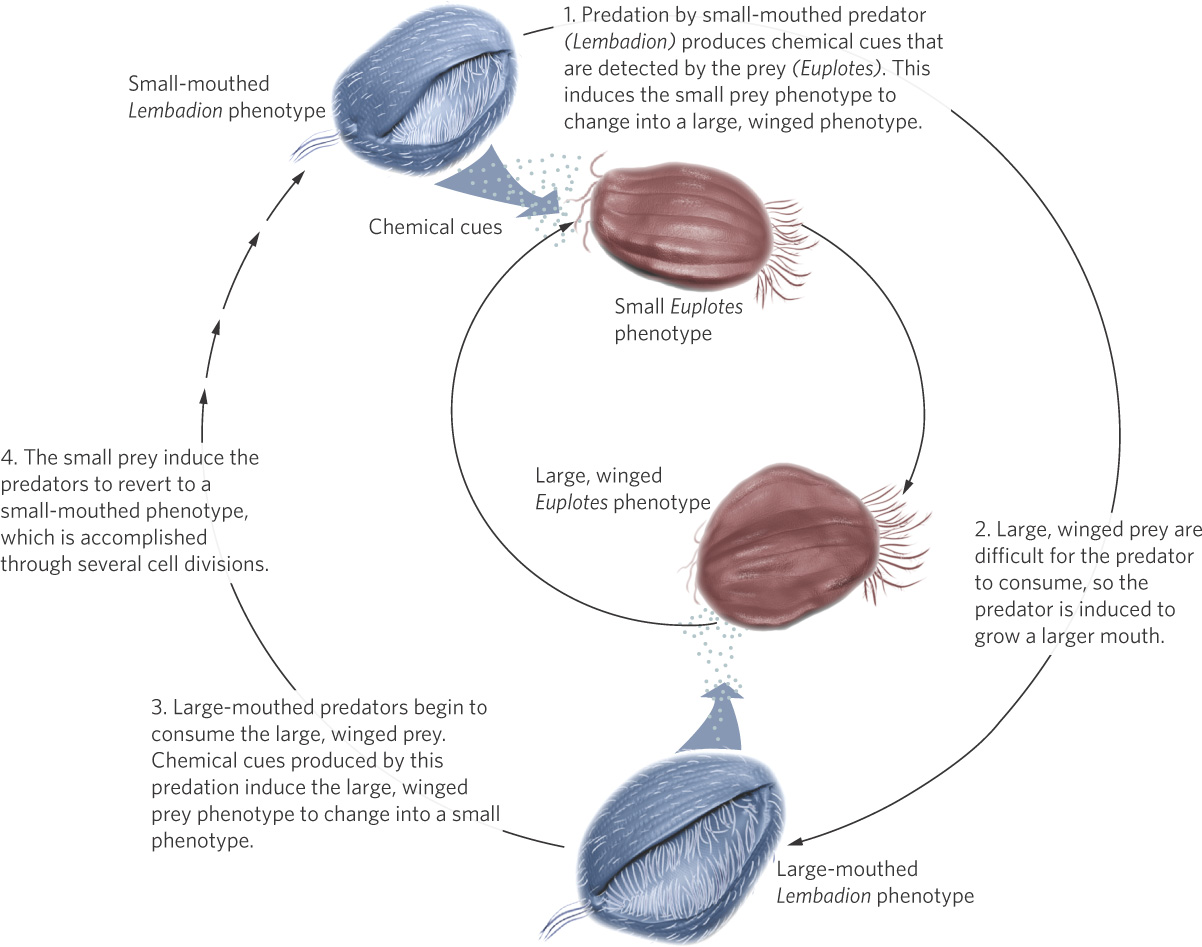
Figure 4.5 Inducible defenses and offenses. The ciliate Euplotes serves as prey for a larger ciliate, Lembadion. When Euplotes detects the predatory Lembadion in the water via chemical cues, it changes shape from an uninduced small phenotype to a predator-induced phenotype that has large “wings” and other projections that make it too large to fit in the predator’s mouth. When the predator begins to encounter the large, winged prey, mechanical cues induce it to increase the size of its mouth. This larger mouth can capture the large, winged prey but it is poor at capturing the small prey, which develop in response to chemical cues emitted by large-mouthed predators. As small prey become more abundant, the predatory Lembadion rapidly divides several times to once again have a small mouth.
After H. W. Kuhlmann and K. Heckmann, Hydrobiologica 284 (1994): 219–227; M. Kopp and R. Tollrian, Ecology 84 (2003): 641–651; M. Kopp and R. Tollrian, Ecology Letters 6 (2003): 742–748.